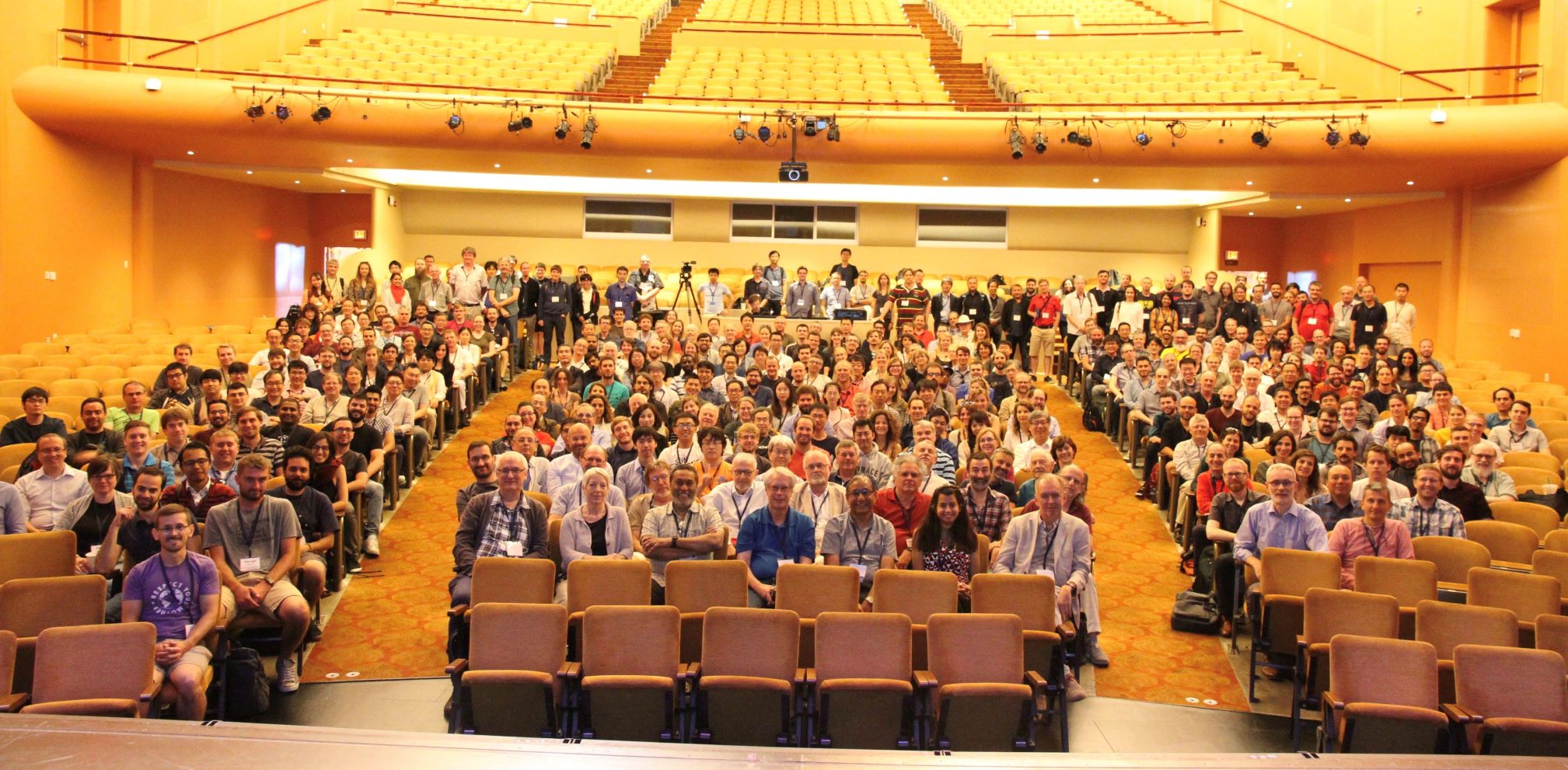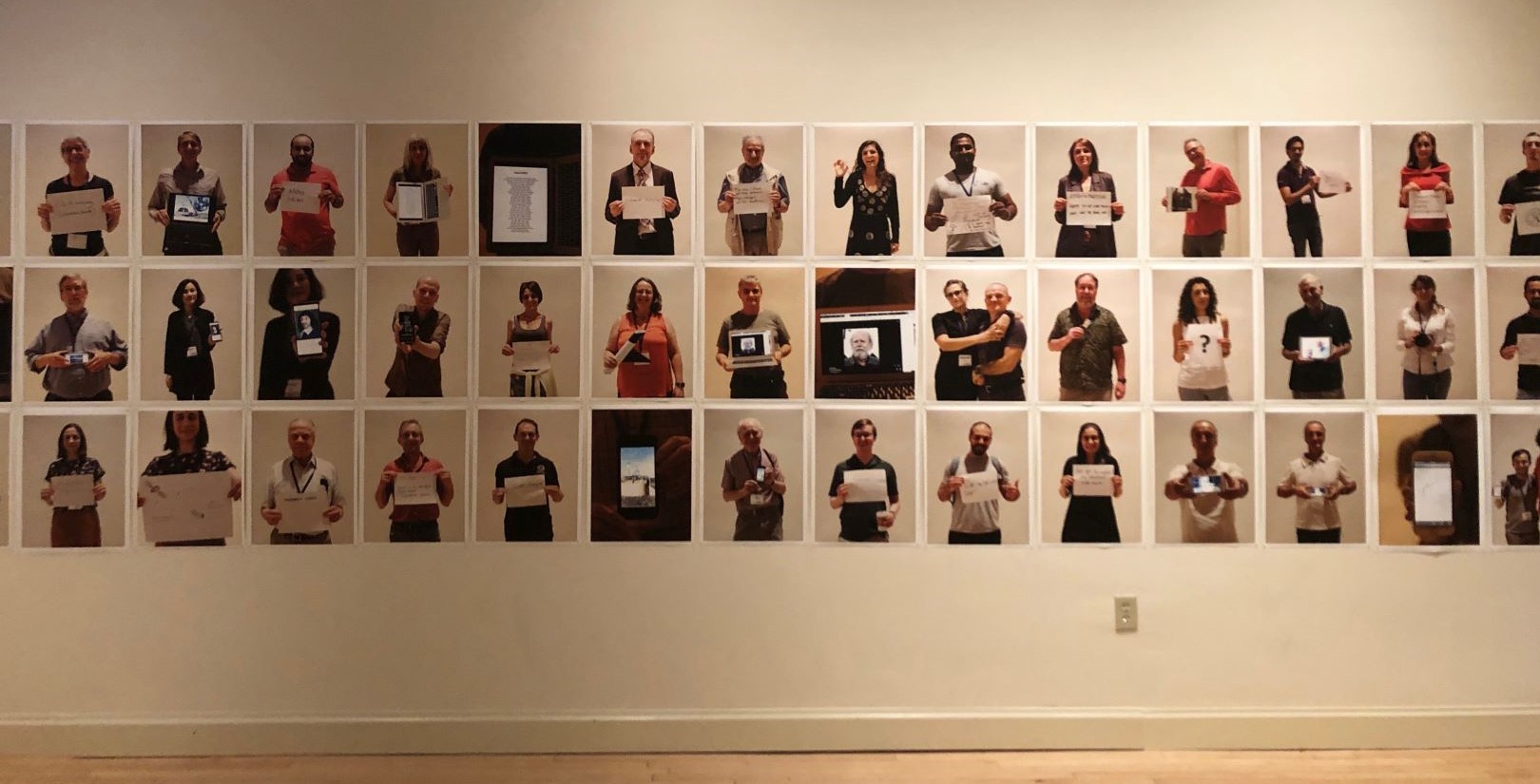A successful ICRC 2019
It has been a week since the 36th International Cosmic Ray Conference ended in Madison, WI. This was the first time in 20 years that the United States hosted the ICRC, a physics conference organized biennially by the Commission on Astroparticle Physics (C4) of the International Union of Pure and Applied Sciences (IUPAP) since 1947.
Over the course of eight days of meetings, 815 participants from 39 countries gathered at Memorial Union at the University of Wisconsin–Madison. In total, the meeting yielded 1,056 papers, 406 oral talks, 650 posters, 35 plenary talks, two diversity events, a public lecture, and an art gallery.
All plenary talks were livestreamed—a first for ICRC—and most are still available to view at this link (it is free, but registration is required). All proceedings are also available online.

The opening session on Thursday, July 25, started with welcoming remarks by Albrecht Karle of the local organizing committee and UW–Madison College of Letters & Sciences interim dean Eric Wilcots. Director of the National Science Foundation, France A. Cordóva, greeted participants via video. Then, C4 commission chair Sunil Gupta announced the winners of the biennial C4 awards:
- IUPAP Young Scientist Awards in recognition of outstanding contributions by young scientists in astroparticle physics: Dr. Siyao Xu (UW–Madison) and Prof. Anna Nelles (DESY Zeuthen, FAU Erlangen Nuremberg)
- Shakti P. Duggal Award in recognition of an outstanding young scientist for contributions in any branch of cosmic ray physics: Prof. Irene Tamborra (Niels Bohr Institute, University of Copenhagen)
- O’Ceallaigh Medal to recognize significant contributions to the field of astroparticle physics over an extended career: Prof. Piergiorgio Picozza (University of Rome Tor Vergata, INFN)
- Yodh Prize in recognition of a scientist whose research career has had a major impact on the understanding of cosmic rays: Prof. Francis Halzen (UW–Madison)
- IUPAP-TIFR Homi Bhabha Medal and Prize in recognition of an active scientist who has made distinguished contributions in the field of high-energy cosmic-ray physics and astroparticle physics over an extended academic career: Prof. Takaaki Kajita (University of Tokyo, ICRR)
From Thursday, July 25, to Wednesday, August 1, attendees spent each morning in Shannon Hall at the Memorial Union for two review talks and three highlight talks. After a break for lunch, they had a choice of different parallel sessions to attend: cosmic ray direct, cosmic ray indirect, dark matter, gamma ray direct, gamma ray indirect, neutrino, or solar and heliospheric. There was also a poster session each afternoon.
This ICRC had many special moments. Following a review talk on the Parker Solar Probe on Wednesday, July 31, a video address was given by the probe’s namesake, Eugene Parker, S. Chandrasekhar Distinguished Service Professor Emeritus of Astronomy and Astrophysics at the University of Chicago. The probe launched into space on August 12, 2018, and has now flown by the Sun twice and sent back data. Unfortunately, Parker was unable to attend the conference, but he sent the short video in which he told the story of his seminal 1958 paper that established the concept of solar wind and expressed his excitement to review the Parker Solar Probe data, which will become available later this year.
To complement the science, there was also an art gallery on display in the Memorial Union’s Main Gallery featuring two works inspired by cosmic ray physics. Messages, by Mark-David Hosale with IceCube collaborator Jim Madsen, used light and sound to represent an abstracted and collapsed form of the universe. Event Horizon, by Faisal Abdu’Allah with Maryam Ladoni, was a series of portraits of scientists holding objects that inspired their careers. It started with just three portraits of prominent cosmic ray physicists: Gaurang Yodh, Angela Olinto, and Thomas Gaisser. But ICRC attendees had the opportunity to participate by bringing their own special objects and having their portraits taken on the first day of the conference. By Monday, Abdu’Allah had added 55 new photos to the gallery.

The closing session took place after the rapporteur talks on Thursday, August 1. There, Sunil Gupta announced the winners of the three poster awards: Gwen DeWasseige of Laboratoire APC and CNRS Universite Paris-Diderot (“First search for GeV neutrinos from bright gamma-ray solar flares using the IceCube Neutrino Observatory”), Elisa Resconi of the Technical University of Munich (“Pacific Ocean Neutrino Explorer (P-One)”), and Vanessa Lopez-Barquero of UW–Madison (“Chaotic Effects on Cosmic Ray Anisotropy in a Heliosphere-inspired Model”).
Gupta reminded the audience that the 37th ICRC in 2021 will take place in Berlin, Germany, and he revealed the recent decision that the 38th ICRC will be held in Osaka, Japan, in 2023.
“We were thrilled that we could attract visitors from around the world for an exciting program,” said Karle of the successful conference. “Everyone enjoyed the beautiful setting: the Memorial Union with the iconic Terrace in perfect summer weather.”
